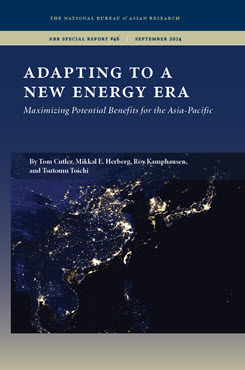The Architecture of Asian Energy Security
This is one of four essays in the NBR Special Report “Adapting to a New Energy Era: Maximizing Potential Benefits for the Asia-Pacific.”
EXECUTIVE SUMMARY
This essay traces the history of regional cooperation in Asia on energy security, compares various multilateral forums’ emergency planning arrangements for an oil disruption, and suggests that new and politically bold steps will be needed to strengthen Asia’s architecture for energy security.
MAIN ARGUMENT
The energy picture of Asia as a region is being reshaped, exposing it to new vulnerabilities but also opening up new opportunities. The unrelenting growth in Asian energy demand, which was initially led by Japan and South Korea and subsequently by China and India, is now also being driven by the ten member countries of the Association of Southeast Asian Nations (ASEAN). Southeast Asia’s increasing vulnerability to oil import disruptions and North America’s growing energy self-sufficiency have altered some of the premises of Asian energy security and raise questions about the adequacy of the existing network of overlapping institutional structures. Existing regional forums such as the Asia-Pacific Economic Cooperation (APEC) process, ASEAN, and the East Asia Summit (EAS), in conjunction with the International Energy Agency (IEA), have become progressively active in their technical collaboration in regard to emergency planning and oil stocks. As a result, Asian leaders now need only make a collective political commitment to a concrete plan of action if the region is to be adequately prepared for when, not if, there is an energy market disruption that causes major economic damage.
POLICY IMPLICATIONS
- Building a regional oil stockpile seems to be the most feasible next step Asian governments can take to enhance their energy security.
- The EAS is a potential vehicle for an ASEAN-centric, pan-Asian umbrella arrangement, although the first steps might need to be taken by a smaller group of nations. The summit’s Energy Cooperation Task Force should establish a new work initiative on oil stocks and contingency planning. Its work should build upon the efforts of the ASEAN +3 oil stockpiling process and be conducted in collaboration with the IEA.
- The U.S. should be fully engaged in this process, both because it will still play a role in protecting key sea lanes for energy transport and because the country’s emergence as a potentially key energy exporter will help Asia diversify its supplies and mitigate risk.
Tom Cutler is President of Cutler International, LLC, and was previously Director of the Office for European and Asia Pacific Affairs at the U.S. Department of Energy.


